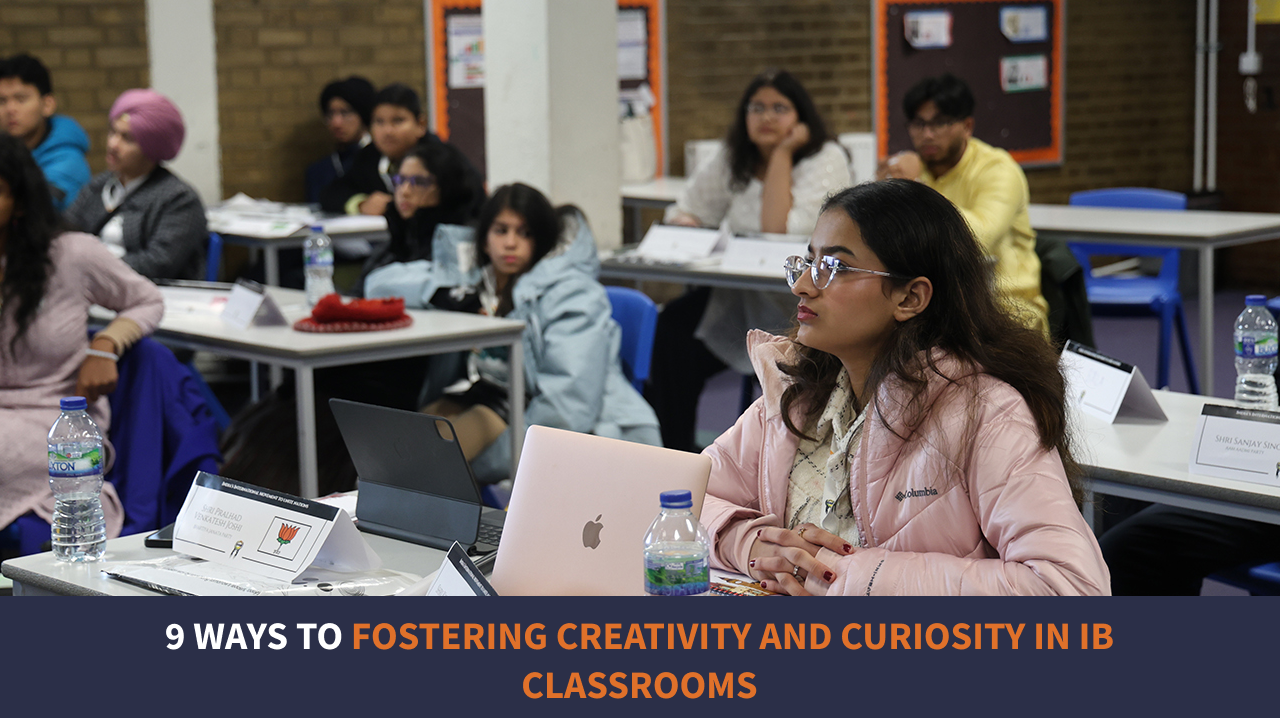9 Ways to Fostering creativity and curiosity in IB classrooms

Are you an educator in IB classrooms who struggles with your creative students? While some students are well-suited to the world of academia, others struggle. Their creativity is a gift, but it may cause them to feel under-stimulated and unfulfilled in a conventional classroom environment. Inspiring students to express themselves and learn in their own ways is part of your job. Are you up to the challenge? If you’re ready to commit to improving your IB classroom, keep reading to learn all about how you can make your classroom friendlier to unconventional thinkers and encourage creativity.
1.Allow “Outside of the Box” Thinking
Depending on the age of the students you’re teaching, you may feel inclined to encourage only one way of thinking. The delivery of facts and figures is difficult and daunting. As a teacher, you know that students will have to think inside of the box most of the time.
2.Encourage Independent Problem-Solving
Some children never develop good problem-solving skills because they have answers fed to them by teachers or other students. It’s important to encourage students to collaborate, but one of the best teaching strategies to encourage creativity is to incorporate independent problem-solving.
3.Don’t Discourage Doodles
Many teachers get frustrated when they notice a child who is doodling or writing non-academic things in the margins of their schoolwork. While it’s important that your students do all of their work, a student who is doodling while listening, thinking, or after their work is done should be encouraged, not discouraged. Doodling is often the first step on a child’s path toward being an artist. It’s often what leads to powerful stories, movies, and comics.
4.Focus on Strengths
Speaking of allowing doodles, make sure that you teach each student’s strengths. This is difficult when you have many students. It requires flexibility and unique lesson plans. The extra effort will make a huge difference in each child’s life. There’s a saying that goes “Everyone is a genius. But if you judge a fish by its ability to climb a tree, it will live its whole life believing that it is stupid.” While this quote is often misattributed to Einstein, it has some truth behind it.
5.Set Up a Flexible Classroom
What does your classroom layout look like? If you’re like many teachers, children are either in pods or individual desks. You may rearrange seats every so often, but overall, students remain in their own spots. There are benefits to this. If you know that some students can’t work together or can’t stop talking to each other, it’s helpful to keep them apart. That said, is it really the best option?
6.Hands-On Learning Matters
How many opportunities do your students have to engage in hands-on learning? Many children learn by doing or by engaging in unique experiences. While reading a book is good enough for some students, others will flex their creativity muscles when they have the opportunity to be more interactive with their lessons.
7.Create Unconventional Lesson Plans
Speaking of hands-on learning, it’s your job as an educator to create unique and unconventional lesson plans to support and encourage creative students. Lecturing or reading to students is easy. For new teachers, this is often the most obvious way to adapt to a teaching environment. That said, these approaches aren’t simulating for creative children. By teaching in unconventional ways, you’re making students think in unconventional ways.
8.Use Visual Aids
If you want your children to feel confident when they’re expressing their creativity, consider using more visual aids in the classroom. Most assignments in conventional classrooms aren’t stimulating. They may cause students to feel bored and uninspired. By adding examples and items to handle, manipulate, and examine more closely you may spark some creative responses.
9.Follow Your Students’ Lead
When you’re not sure how to support students who need more creative education strategies, try to follow their lead. You can’t put children in charge of their education, but you can watch them learn what they need. A lot of the teaching process is trial and error, so test out new strategies with your creative students and see what works best for them.
Conclusion
Inspiring students is one of the best and most fulfilling aspects of being an educator of an IB classroom. You’re molding and shaping young minds and preparing these children for the real world. While academic education is important, supporting creative students and encouraging their creativity will change their lives and outlooks. You might be helping a future creator. Are you ready to make some much-needed changes to your teaching strategies and educational style? Why not pursue new and unconventional possibilities? MIT VGS is committed to fostering positive learning environments for all students in.

